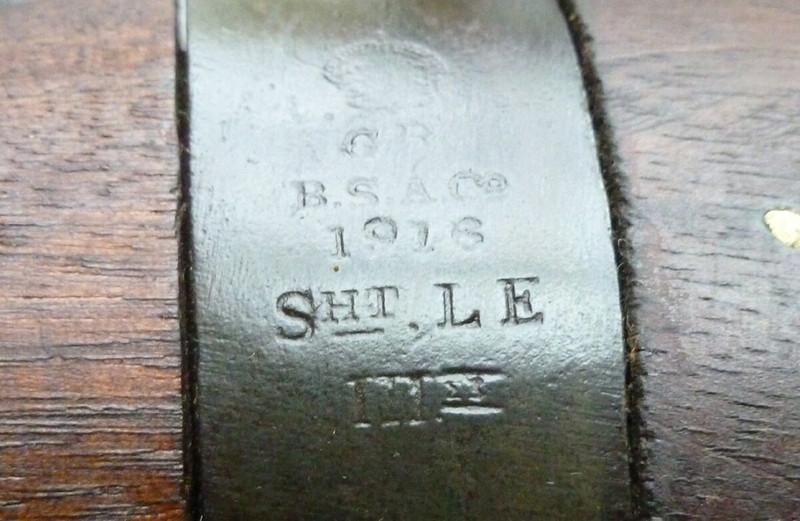-
FREE MEMBER
NO Posting or PM's Allowed

Here's another example of "strike thru" star. MkIII retrofit (the armourer was more accurate on the positioning of the marks over the star). It happens to be a '16 BSA, this one has South African acceptance stamps on the barrel, knocks, and buttstock.

-
12-28-2011 10:30 AM
# ADS
Friends and Sponsors

-
Legacy Member

The "lll*" was essentially a "budget" relaxation for WW1.
Once the slaughter had stopped, the "lll" remained the standard, hence the retro-fiting of some rifles. I understand that Lithgow in particular, went straight back to the standard "lll" in the early 1920's.
in particular, went straight back to the standard "lll" in the early 1920's.
Long-range "dial-sights" remained in vogue on the SMLE and P-14 until the 1930s. Eventually someone twigged that they were a bit redundant, even given the less than generous allocations of machine-guns in the inter-war period. The deletion of the windage adjustment on the rear sight may seem a bit of a step backwards. I suspect that the elimination of something that could contribute to wayward shooting under duress ("Sorry, Sergeant, I forgot to re-centre my sights."), was not a huge loss; see sights on the No.4.
If you are banging away at obliging targets at known distances and with the aid of range flags, precise windage adjustments as per the wondrous thing fitted to the M-1 Garand are a joy. However, once the rifle range has two-way traffic, the simpler, the better.
are a joy. However, once the rifle range has two-way traffic, the simpler, the better.
-
-
Legacy Member


Originally Posted by
Bruce_in_Oz

The "lll*" was essentially a "budget" relaxation for WW1.
Once the slaughter had stopped, the "lll" remained the standard, hence the retro-fiting of some rifles. I understand that
Lithgow
in particular, went straight back to the standard "lll" in the early 1920's.
Long-range "dial-sights" remained in vogue on the SMLE and P-14 until the 1930s. Eventually someone twigged that they were a bit redundant, even given the less than generous allocations of machine-guns in the inter-war period. The deletion of the windage adjustment on the rear sight may seem a bit of a step backwards. I suspect that the elimination of something that could contribute to wayward shooting under duress ("Sorry, Sergeant, I forgot to re-centre my sights."), was not a huge loss; see sights on the No.4.
If you are banging away at obliging targets at known distances and with the aid of range flags, precise windage adjustments as per the wondrous thing fitted to the M-1
Garand
are a joy. However, once the rifle range has two-way traffic, the simpler, the better.
Volley sights were long gone by 1930.
-
-
There was an EMER instruction issued in - I think, 1948/50 - that detailed the marking of Mk3 and 3* rifles. It was all to do with the * being barred out, even if the cut-off slot remained and....... and.......... whether the cut-off slot was covered by a higher fore-end. I'm sure I wrote it out word for word once. Anyway, the long and short of it was that once the star was marked, it should not be deleted and all those Mk3 or 3* rifles in service were to be documented by mark/type and VAOS category by quartermasters as Mk3* - or something like that
-
-
Advisory Panel


The rifle looks as if it may have been "sporterized" for a hunter, and not just subjected to thoughtless Bubbaring. Have a look whether the inner band+spring is still in place, and if any bedding has been applied.
If that is so, then I am glad that I live a long way away from Enfield purist who might feel inclined drop a crate of No 1s on me from a great height, when I write that it quite possibly now shoots better than in the original configuration, if you have ammo that is matched to the barrel "vibes". This is not knocking the SMLE, which was conceived as a rugged service rifle with a good magazine capacity (in which it succeeded brilliantly) and not as a target or hunting rifle.

Patrick
-















 Register To Reply
Register To Reply











